Photo: Kevin Mazur/Getty Images for the Recording Academy
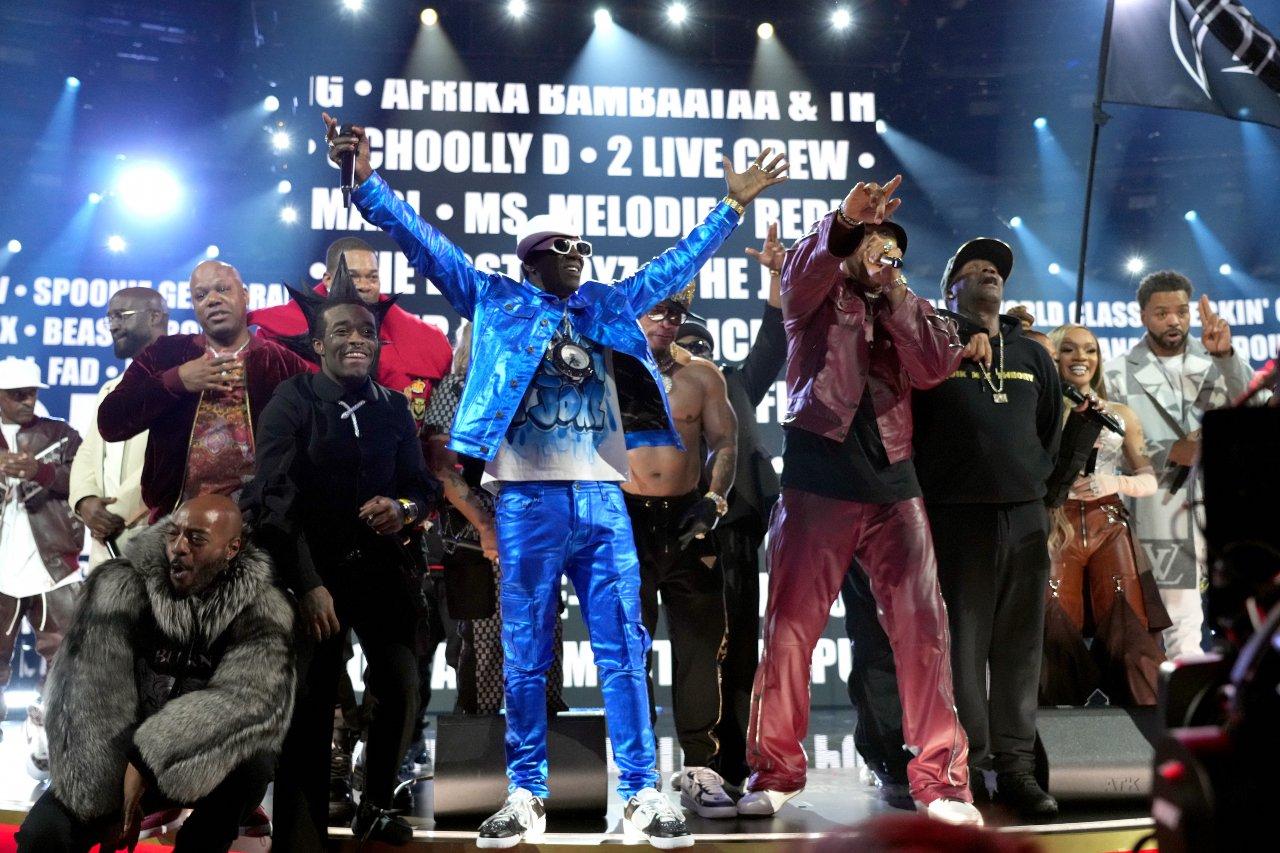
list
How Hip-Hop Took Over The 2023 GRAMMYs, From The Golden Anniversary To 'God Did'
It's the 50th anniversary of hip-hop, but the 2023 GRAMMYs celebrations didn't stop at the epic, MC-saturated blowout. Here are five ways the genre took over Music's Biggest Night.
The 2023 GRAMMYs' ambitious, world-beating tribute to hip-hop's 50th anniversary is getting a lot of ink — for a very good reason.
Featuring an ensemble ranging from progenitors like Grandmaster Flash and Run-DMC, to legends such as Too Short and Missy Elliott, and modern-day practitioners like Lil Baby, GloRilla and Lil Uzi Vert, the tribute segment was stunning not only on a logistical level, but on conceptual, emotional and historical planes.
But the Recording Academy's tribute to this landmark in time wasn't siphoned off to that 15-minute segment — not even close. In fact, the entirety of Music's Biggest Night radiated with the courageous, intrepid, forward-thinking spirit of hip-hop.
The tribute performance was just one of many nods to rap during GRAMMY week. Days before, Lil Wayne, Missy Elliott and Dr. Dre were honored by the Recording Academy’s Black Music Collective in a ceremony that contained performances by Snoop Dogg, 2 Chainz and Ciara. And the pre-GRAMMY gala featured a performance from Weezy, Latto and Lil Baby.
At Music’s Biggest Night, the hip-hop love roared fully to life. Here are five ways hip-hop took over the 2023 GRAMMYs, a foreshadowing of an entire year in celebration of the epochal artform — with the extended hip-hop tribute as a springboard.
***GloRilla performing at the 2023 GRAMMYs. Photo: Getty Images for the Recording Academy***
A Global Hip-Hop Rager For The Ages
Until Music's Biggest Night, to fit hip-hop's evolution and essence into 15 minutes would seem logistically untenable. But the Academy did the impossible.
The Questlove-curated set moved lightning-quick from '70s and '80s pioneers, to 2000s radio dominators like Nelly, all the way to the current era.
Like with the last Super Bowl's ensemble cast of rap greats, the result was emotionally walloping, historically edifying and visually spectacular.
Most importantly, the music was exceptional — a tip of the hat to a precious form of American expression. To anyone who still subscribes to some form of stigma — you don't know what you're missing.
The Rap Categories Contained Serious Jewels
Let's take a step back, though, and examine the 2023 GRAMMYs' hip-hop nominees and winners themselves.
Kendrick Lamar was well-represented in both the General and Rap fields, and commensurately for Mr. Morale and the Big Steppers and Lamar's non-album single "The Heart Pt. 5."
For the former, Lamar won Best Rap Album; for the latter, Best Rap Song and Best Rap Performance. With the success of "The Heart Pt. 5," he is now the most-awarded artist in the latter category.
Together, these offerings comprise something of a creative and emotional watershed for Lamar. As for Pusha T, It's Almost Dry — nominated for Best Rap Album — contained some of his most crystal-sharp coke raps to date.
Plus, the sheer range of guests on DJ Khaled's GOD DID — nominated for Best Rap Album — could be the ultimate testament to his indomitable spirit, curatorial acumen and infectious sense of largesse.
This also applies to fellow nominees from Future, who won Best Melodic Rap Performance for "WAIT FOR U," to Jack Harlow, who was nominated liberally throughout the Rap field.
Given the level of craft throughout, hip-hop isn't just ripe to be celebrated for its past, but for its boundless future.
Dr. Dre Was Presented With A Global Impact Award
At the 2023 GRAMMYs, seven-time GRAMMY winner Dr. Dre was the recipient of the inaugural Dr. Dre Global Impact Award for his multitude of achievements through his innovative, multi-decade career.
Dr. Dre was presented the award after a plethora of televised bona fides, and offered his thanks to the Recording Academy and Black Music Collective for the prestigious honor in light of the Recording Academy's celebration of the 50th anniversary of hip-hop.
*A tribute to Takeoff during the 2023 GRAMMYs. Photo: Getty Images for the Recording Academy*
Quavo Performed A Moving Tribute To The Late Takeoff
There's a bittersweetness to celebrating hip-hop on a global scale in 2023, as so many of its best and brightest have died far too young in recent years.
Among these tragedies was the senseless death of Takeoff, one-third of the family-bound rap trio Migos, along with Offset and Quavo.
Read More: Remembering Takeoff: Why The Unassuming Rapper Was Foundational To Migos
As part of the In Memoriam segment, backed by worship ensemble Maverick City Music, Quavo honored his late nephew with a soul-searing version of "Without You."
"Tears rollin' down my eyes / Can't tell you how many times I cried," he rapped before an empty microphone stand, poignantly hung with Takeoff's chain. "Days ain't the same without you / I don't know if I'm the same without you."
*John Legend, Fridayy, and DJ Khaled performing at the 2023 GRAMMYs. Photo: Kevork Djansezian/Getty Images for The Recording Academy*
DJ Khaled & Company Closed The Curtain With "GOD DID"
At the end of the ceremony, DJ Khaled brought out collaborators Jay-Z, John Legend, Lil Wayne, Fridayy, and Rick Ross for a rendition of GOD DID's title track, which was nominated for Song Of The Year, Best Rap Song and Best Rap Performance.
Seated horizontally in an opulent, Last Supper-esque tableau, the stars sang their hooks while bathed in purple light, closing out the 2023 GRAMMYs with laconic flair.
It was a fitting conclusion to Music's Biggest Night, one that placed hip-hop where it belongs: on the top shelf.
2023 GRAMMY Nominations: See The Complete Winners & Nominees List
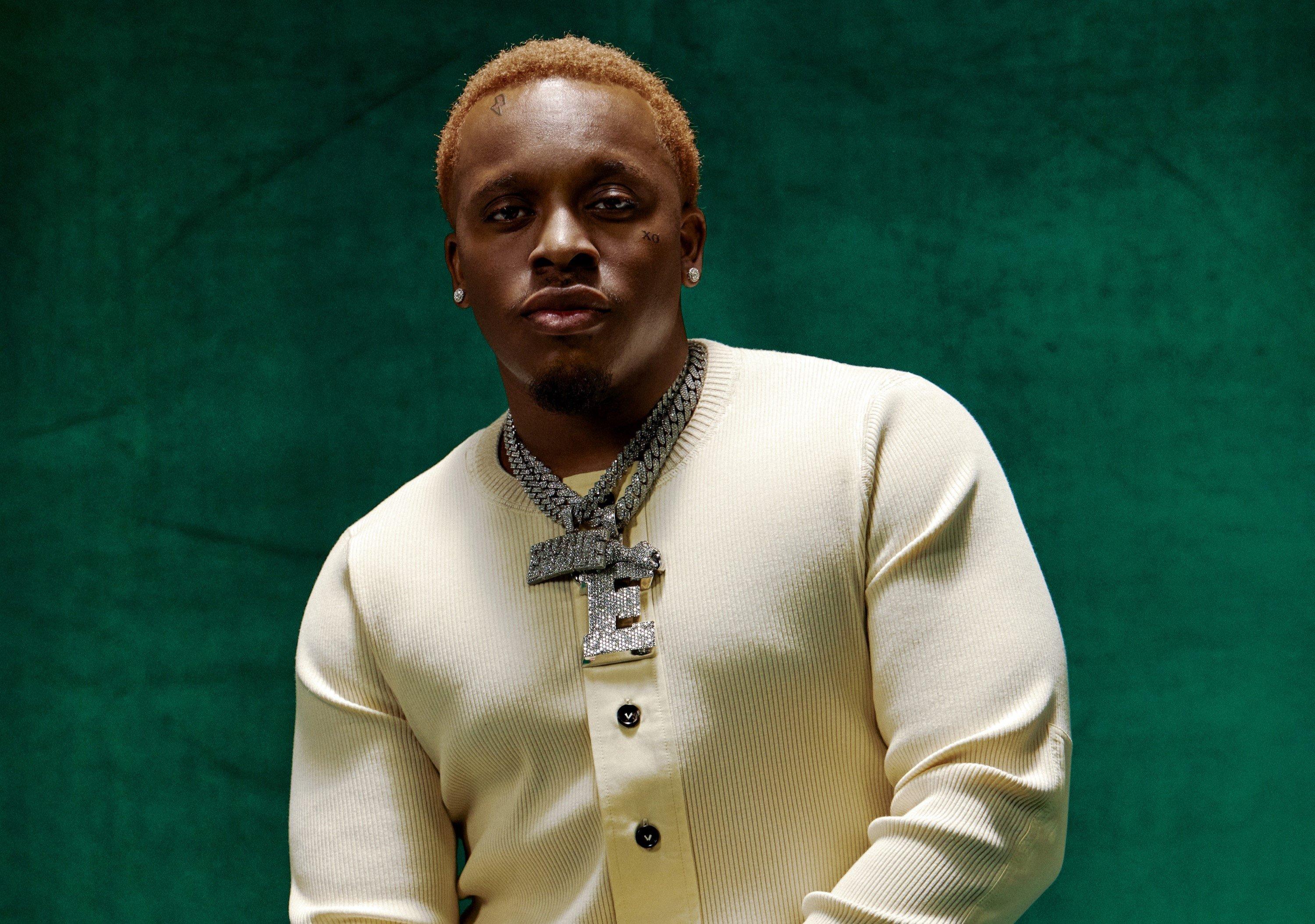
Photo: Amy Lee
list
5 Rising L.A. Rappers To Know: Jayson Cash, 310babii & More
From San Diego to the Bay Area, Seattle and beyond, the West Coast bursts with talent. Los Angeles is at the heart of this expanse, and these five rappers are just a few who are showcasing the vibrant sounds of West Coast hip-hop.
GRAMMY winners Kendrick Lamar and Mustard have long repped their California roots. Earlier this summer, their powerhouse anthem "Not Like Us" brought West Coast rap back to its roots and shone a global spotlight on the scene.
Lamar and Mustard are at the forefront of a renaissance in West Coast rap. Their shared roots in Southern California cities — Mustard from Los Angeles and Kendrick from Compton — adds authenticity and resonance to their partnership. Their undeniable chemistry was on display in the video for "Not Like Us," which received a million views less than an hour after its release.
Mustard's signature beats and Lamar's profound lyricism has resurfaced the sound and culture that makes West Coast rap so unique and paved the way for a new generation of artists. All signs suggest that another impactful collaboration may appear on Mustard's upcoming album, Faith of A Mustard Seed.
Learn more: A Guide To Southern California Hip-Hop: Definitive Releases, Artists & Subgenres From L.A. & Beyond
Kendrick Lamar headlined the electrifying Pop Out concert on Juneteenth, which also featured sets from Mustard and DJ Hed. The event saw a handful of L.A. rappers, opening for Lamar in a showcase of the vibrant talent that defines the region's rap scene.
The West Coast is a vast reservoir of talent, stretching from the Bay Area to Seattle. At the heart of this creative expanse is Los Angeles, which brings fresh perspectives, innovative styles, and renewed energy to hip-hop, ensuring the genre thrives. With the stage set for these newcomers to shine, it's the perfect time to take a closer look at some of the rising talents poised to impact the rap scene. While this list only scratches the surface, it offers a glimpse into the diverse and exciting talent from SoCal, the epicenter of the West.
Blxst
Arising from Los Angeles, Blxst initially played the background as a producer but soon demonstrated his ability to excel across all facets of music creation. Blxst's breakout moment came with his platinum-certified single "Chosen," which solidified his place in the music industry. His collaboration on Kendrick Lamar's "Die Hard" from Mr. Morale And The Big Steppers further showcased his skill for crafting hooks that elevate tracks, resulting in two GRAMMY nominations.
As he prepares to release his debut album, I'll Always Come Find You on July 19, Blxst stands at a pivotal point in his career. With a great resume already to his name, his forthcoming album promises to showcase his undeniable talent and leave a lasting impact on the West Coast music scene.
Bino Rideaux
Bino Rideaux is a South Central native and frequent collaborator with the GRAMMY-winning rapper Nipsey Hussle. He is the only artist to have a joint project with Hussle, No Pressure, released before the prolific rapper's untimely death. Rideaux has hinted at having a treasure of unreleased music with Hussle, saved for the perfect moment and album.
Rideaux is known for creating tracks that get the city outside and dancing. He has made three beloved projects with Blxst, titled Sixtape, Sixtape 2, and Sixtape 3 resulting in sold-out shows and a special place in West Coast Rap fans' hearts. Endorsed by industry heavyweights like Young Thug, Rideaux continues to carve his path at his own pace. His journey is nothing short of a marathon, echoing the enduring legacy of his mentor.
Kalan.FrFr
Kalan.FrFr, whose name stands for "For Real For Real," is an artist whose music is as genuine as his name suggests. Growing up in Compton and Carson, Kalan.FrFr has always stayed true to his roots, and exudes the unyielding confidence essential to making it in the City of Angels.
His breakthrough mixtape, TwoFr, showcased his ability to shine without major features, delivering verses with catchy hooks and melodic rap. He's shown he's not confined to one sound, delivering vulnerable tracks like "Going Through Things'' and "Never Lose You." His EP Make the West Great Again, Kalan.FrFr both proves his loyalty to his origins and highlights his versatility. Kalan.FrFr's signature punch-in, no-writing-lyrics-down style keeps his fans on their toes, ensuring that whatever comes next is unpredictable but authentic.
Jayson Cash
Jayson Cash, a rapper hailing from Carson — the same city as TDE artist Ab-Soul — stays true to West Coast rap, from his lyrics to his beat selection. Listening to Jayson Cash's music is like diving into a vivid life narrative. His prowess as a lyricist and storyteller shines through in every verse. He gives his fans an insight into his journey, making it a relatable music experience.
Cash made waves with his debut mixtape, Read The Room, and scored a Mustard beat on the song "Top Down." Two years later, their collaboration continues, with Cash writing on Mustard's upcoming album. Though often seen as an underdog, Cash is not to be underestimated, earning cosigns from West Coast legends like Suga Free and Snoop Dogg. His latest project, Alright Bet, includes a notable feature from Dom Kennedy.
310babii
310babii has achieved platinum-selling status at just 18 years old, while successfully graduating high school. Yet 310babii's career began in seventh grade, when he recording songs on his phone showing early signs of motivation and creativity. His 2023 breakout hit "Soak City (Do It)" quickly gained traction on TikTok — and caught the ears of Travis Scott and NFL player CJ Stroud.
As the song grew in popularity, it led to a remix produced by Mustard, who invited the Inglewood native to join him onstage during his set at The Pop Out. 310babii's innovative spirit shines through in his distinctive visuals, exemplified by the captivating video for his song "Back It Up." His recent debut album, Nights and Weekends, released in February, underscores his evolving talent and promise within the music industry.
Latest News & Exclusive Videos

2024 Paris Olympics Opening Ceremony: Watch Celine Dion, Lady Gaga, Gojira & More Perform

Ice Spice Is The Drill Queen On 'Y2K!': 5 Takeaways From Her Debut Album

New Music Friday: Listen To New Songs From Halsey, MGK And Jelly Roll, XG & More

Watch Young MC Win Best Rap Performance In 1990

The Red Clay Strays Offer A New Kind Of Religion With 'Made By These Moments'
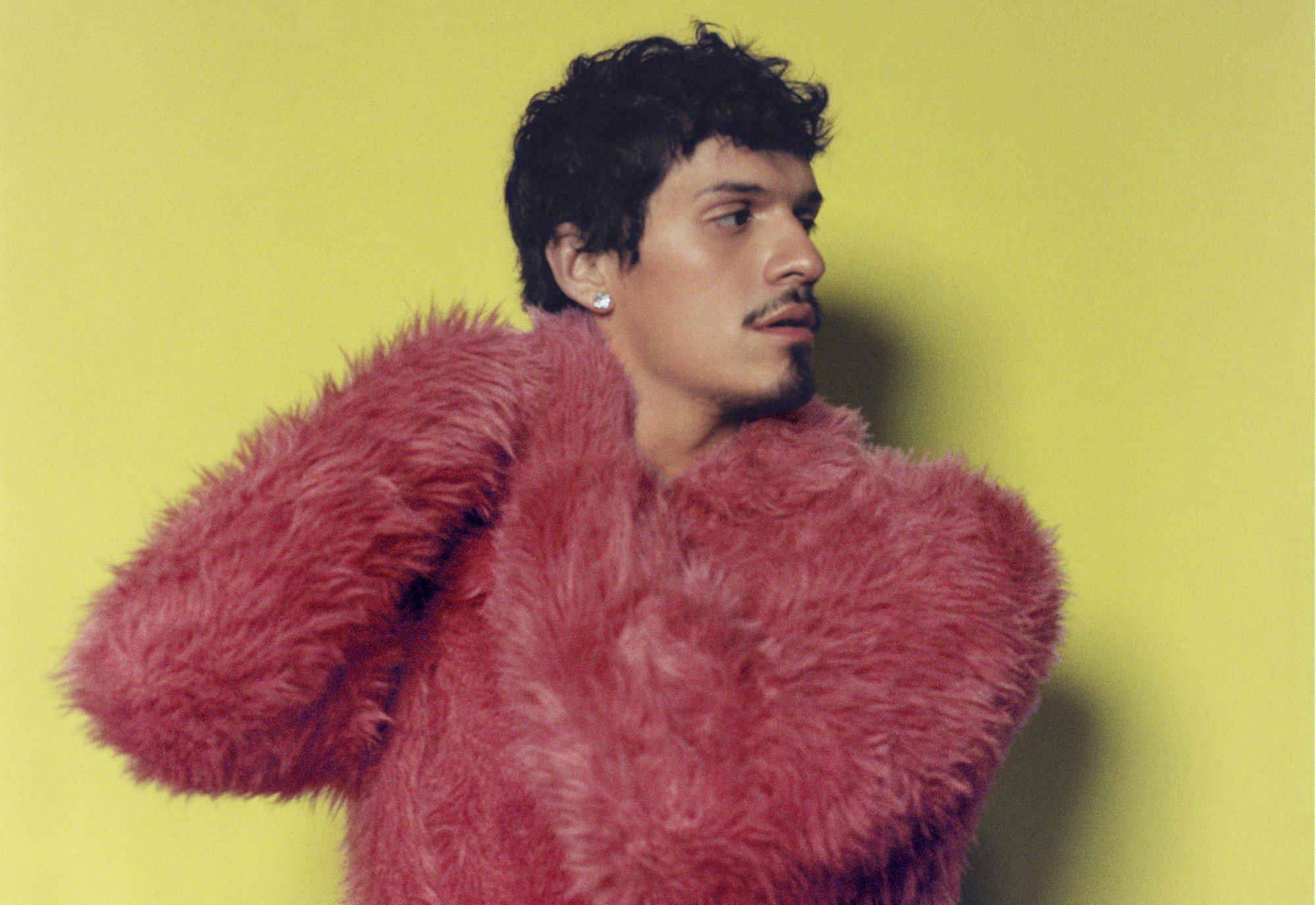
Photo: Aitor Laspiur
interview
Omar Apollo Embraces Heartbreak And Enters His "Zaddy" Era On 'God Said No'
Alongside producer Teo Halm, Omar Apollo discusses creating 'God Said No' in London, the role of poetry in the writing process, and eventually finding comfort in the record's "proof of pain."
"Honestly, I feel like a zaddy," Omar Apollo says with a roguish grin, "because I'm 6'5" so, like, you can run up in my arms and stay there, you know what I mean?"
As a bonafide R&B sensation and one of the internet’s favorite boyfriends, Apollo is likely used to the labels, attention and online swooning that come with modern fame. But in this instance, there’s a valid reason for asking about his particular brand of "zaddyhood": he’s been turned into a Bratz doll.
In the middle of June, the popular toy company blasted a video to its nearly 5 million social media followers showing off the singer as a real-life Bratz Boy — the plastic version draped in a long fur coat (shirtless, naturally), with a blinged-out cross necklace and matching silver earrings as he belts out his 2023 single "3 Boys" from a smoke-covered stage.
The video, which was captioned "Zaddy coded," promptly went viral, helped along by an amused Apollo reposting the clip to his own Instagram Story. "It was so funny," he adds. "And it's so accurate; that's literally how my shows go. It made me look so glamorous, I loved it."
The unexpected viral moment came with rather auspicious timing, considering Apollo is prepping for the release of his hotly anticipated sophomore album. God Said No arrives June 28 via Warner Records.
In fact, the star is so busy with the roll-out that, on the afternoon of our interview, he’s FaceTiming from the back of a car. The day prior, he’d filmed the music video for "Done With You," the album’s next single. Now he’s headed to the airport to jet off to Paris, where he’ll be photographed front row at the LOEWE SS25 men’s runway show in between Sabrina Carpenter and Mustafa — the latter of whom is one of the few collaborators featured on God Said No.
Apollo’s trusted co-writer and producer, Teo Halm, is also joining the conversation from his home studio in L.A. In between amassing credits for Beyoncé (The Lion King: The Gift), Rosalía and J Balvin (the Latin GRAMMY-winning "Con Altura"), SZA ("Notice Me" and "Open Arms" featuring Travis Scott) and others, the 25-year-old virtuoso behind the boards had teamed up with Apollo on multiple occasions. Notably, the two collabed on "Evergreen (You Didn’t Deserve Me At All)," which helped Apollo score his nomination for Best New Artist at the 2023 GRAMMYs.
In the wake of that triumph, Apollo doubled down on their creative chemistry by asking Halm to executive produce God Said No. (The producer is also quick to second his pal’s magnetic mystique: "Don't get it twisted, he's zaddy, for sure.")
Apollo bares his soul like never before across the album’s 14 tracks, as he processes the bitter end of a two-year relationship with an unnamed paramour. The resulting portrait of heartbreak is a new level of emotional exposure for a singer already known for his unguarded vulnerability and naked candor. (He commissioned artist Doron Langberg to paint a revealing portrait of him for the cover of his 2023 EP Live For Me, and unapologetically included a painting of his erect penis as the back cover of the vinyl release.)
On lead single "Spite," he’s pulled between longing and resentment in the wake of the break-up over a bouncing guitar riff. Second single "Dispose of Me" finds Apollo heartsick and feeling abandoned as he laments, "It don’t matter if it’s 25 years, 25 months/ It don’t matter if it’s 25 days, it was real love/ We got too much history/ So don’t just dispose of me."
Elsewhere, the singer offers the stunning admission that "I would’ve married you" on album cut "Life’s Unfair." Then, on the very next song — the bumping, braggadocious "Against Me" — Apollo grapples with the reality that he’s been permanently altered by the love affair while on the prowl for a rebound. "I cannot act like I’m average/ You know that I am the baddest bitch," he proclaims on the opening verse, only to later admit, "I’ve changed so much, but have you heard?/ I can’t move how I used to."
More Omar Apollo News & Videos
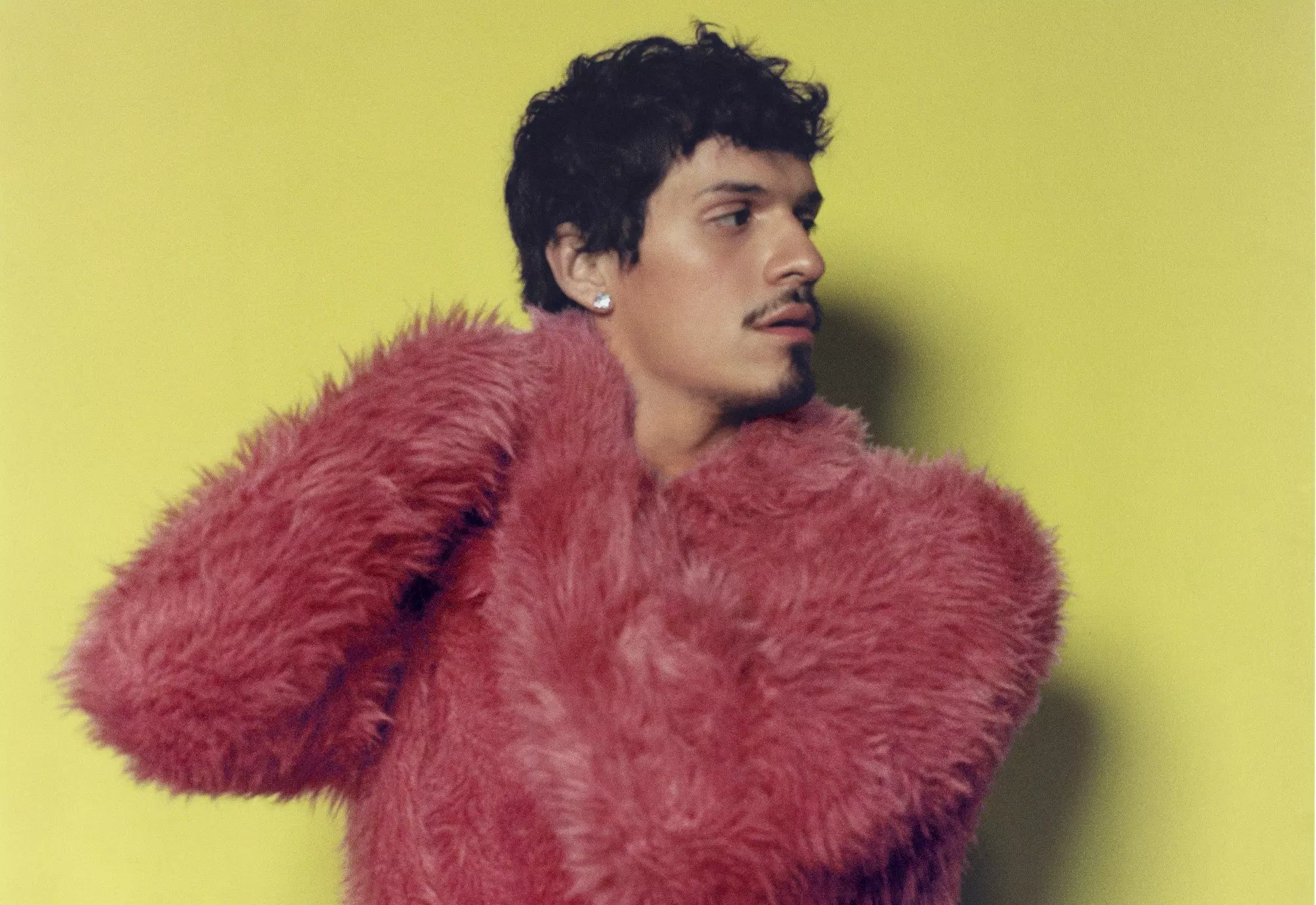
Omar Apollo Embraces Heartbreak And Enters His "Zaddy" Era On 'God Said No'
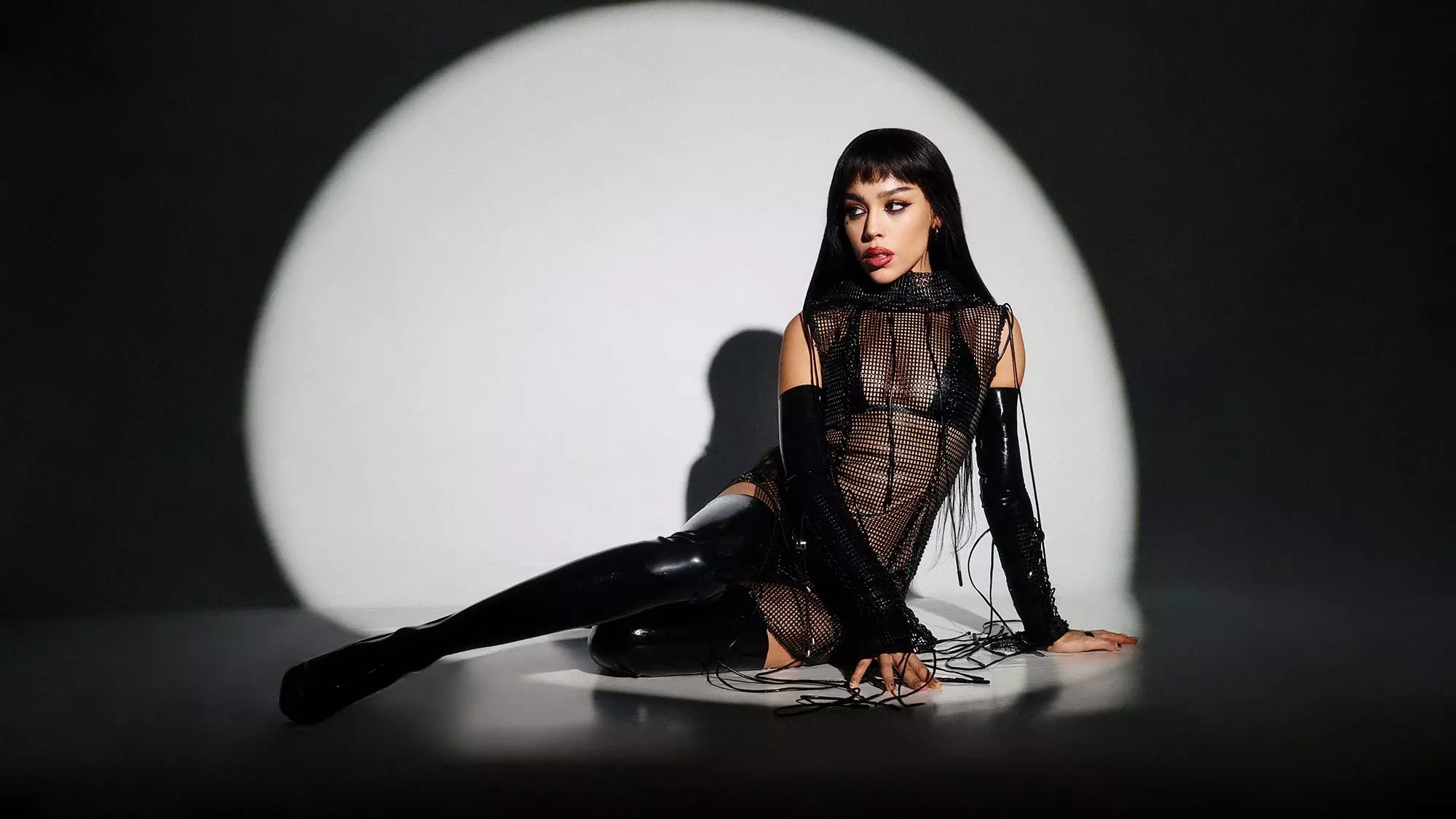
How Danna Paola Created 'CHILDSTAR' By Deconstructing Herself
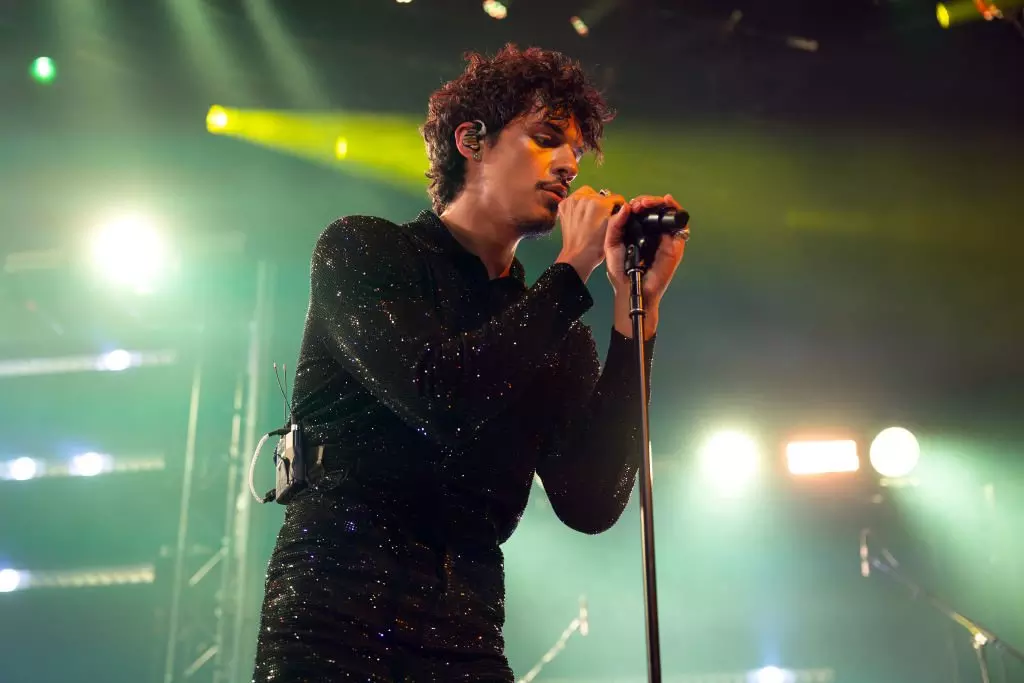
On Omar Apollo's New EP 'Live for Me,’ Limitless Experimentation Created Catharsis
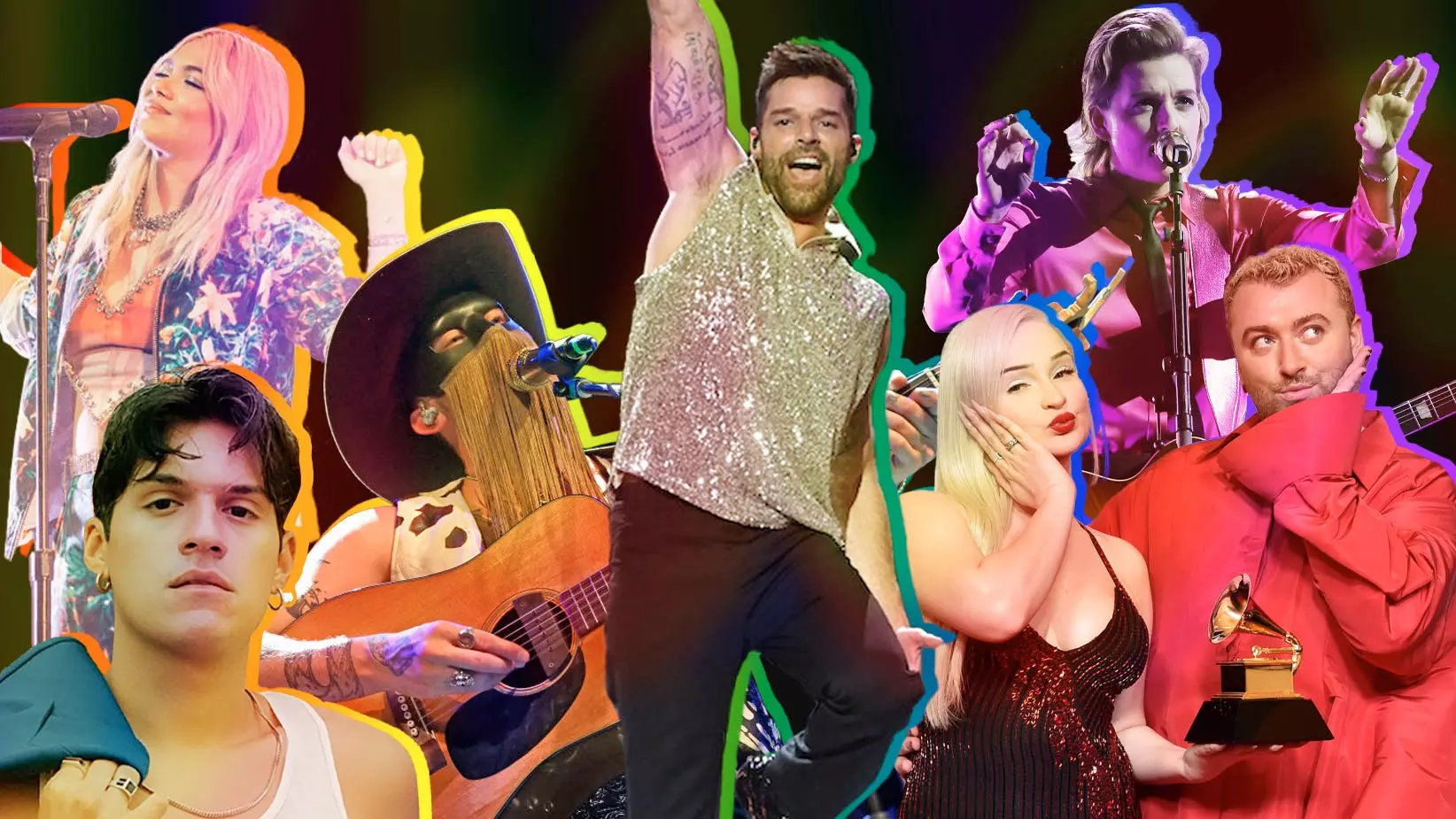
Listen To GRAMMY.com's LGBTQIA+ Pride Month 2023 Playlist Featuring Demi Lovato, Sam Smith, Kim Petras, Frank Ocean, Omar Apollo & More

Omar Apollo On “Evergreen,” Growth & Longing
Given the personal subject matter filling God Said No — not to mention the amount of acclaim he earned with Ivory — it would be understandable if Apollo felt a degree of pressure or anxiety when it came to crafting his sophomore studio set. But according to the singer, that was entirely not the case.
"I feel like I wouldn’t be able to make art if I felt pressure," he says. "Why would I be nervous about going back and making more music? If anything, I'm more excited and my mind is opened up in a whole other way and I've learned so much."
In order to throw his entire focus into the album’s creation, Apollo invited Halm to join him in London. The duo set up shop in the famous Abbey Road Studios, where the singer often spent 12- to 13-hour days attempting to exorcize his heartbreak fueled by a steady stream of Aperol spritzes and cigarettes.
The change of scenery infused the music with new sonic possibilities, like the kinetic synths and pulsating bass line that set flight to "Less of You." Apollo and Halm agree that the single was directly inspired by London’s unique energy.
"It's so funny because we were out there in London, but we weren't poppin' out at all," the Halm says. "Our London scene was really just, like, studio, food. Omar was a frickin' beast. He was hitting the gym every day…. But it was more like feeding off the culture on a day-to-day basis. Like, literally just on the walk to the studio or something as simple as getting a little coffee. I don't think that song would've happened in L.A."
Poetry played a surprisingly vital role in the album’s creation as well, with Apollo littering the studio with collections by "all of the greats," including the likes of Ocean Vuong, Victoria Chang, Philip Larkin, Alan Ginsberg, Mary Oliver and more.
"Could you imagine making films, but never watching a film?" the singer posits, turning his appreciation for the written art form into a metaphor about cinema. "Imagine if I never saw [films by] the greats, the beauty of words and language, and how it's manipulated and how it flows. So I was so inspired."
Perhaps a natural result of consuming so much poetic prose, Apollo was also led to experiment with his own writing style. While on a day trip with his parents to the Palace of Versailles, he wrote a poem that ultimately became the soaring album highlight "Plane Trees," which sends the singer’s voice to new, shiver-inducing heights.
"I'd been telling Teo that I wanted to challenge myself vocally and do a power ballad," he says. "But it wasn't coming and we had attempted those songs before. And I was exhausted with writing about love; I was so sick of it. I was like, Argh, I don't want to write anymore songs with this person in my mind."
Instead, the GRAMMY nominee sat on the palace grounds with his parents, listening to his mom tell stories about her childhood spent in Mexico. He challenged himself to write about the majestic plane tree they were sitting under in order to capture the special moment.
Back at the studio, Apollo’s dad asked Halm to simply "make a beat" and, soon enough, the singer was setting his poem to music. (Later, Mustafa’s hushed coda perfected the song’s denouement as the final piece of the puzzle.) And if Apollo’s dad is at least partially responsible for how "Plane Trees" turned out, his mom can take some credit for a different song on the album — that’s her voice, recorded beneath the same plane tree, on the outro of delicate closer "Glow."
Both the artist and the producer ward off any lingering expectations that a happy ending will arrive by the time "Glow" fades to black, however. "The music that we make walks a tightrope of balancing beauty and tragedy," Halm says. "It's always got this optimism in it, but it's never just, like, one-stop shop happy. It's always got this inevitable pain that just life has.
"You know, even if maybe there wasn't peace in the end for Omar, or if that wasn't his full journey with getting through that pain, I think a lot of people are dealing with broken hearts who it really is going to help," the producer continues. "I can only just hope that the music imparts leaving people with hope."
Apollo agrees that God Said No contains a "hopeful thread," even if his perspective on the project remains achingly visceral. Did making the album help heal his broken heart? "No," he says with a sad smile on his face. "But it is proof of pain. And it’s a beautiful thing that is immortalized now, forever.
"One day, I can look back at it and be like, Wow, what a beautiful thing I experienced. But yeah, no, it didn't help me," he says with a laugh.
Latest News & Exclusive Videos

2024 Paris Olympics Opening Ceremony: Watch Celine Dion, Lady Gaga, Gojira & More Perform

Ice Spice Is The Drill Queen On 'Y2K!': 5 Takeaways From Her Debut Album

New Music Friday: Listen To New Songs From Halsey, MGK And Jelly Roll, XG & More

Watch Young MC Win Best Rap Performance In 1990

The Red Clay Strays Offer A New Kind Of Religion With 'Made By These Moments'
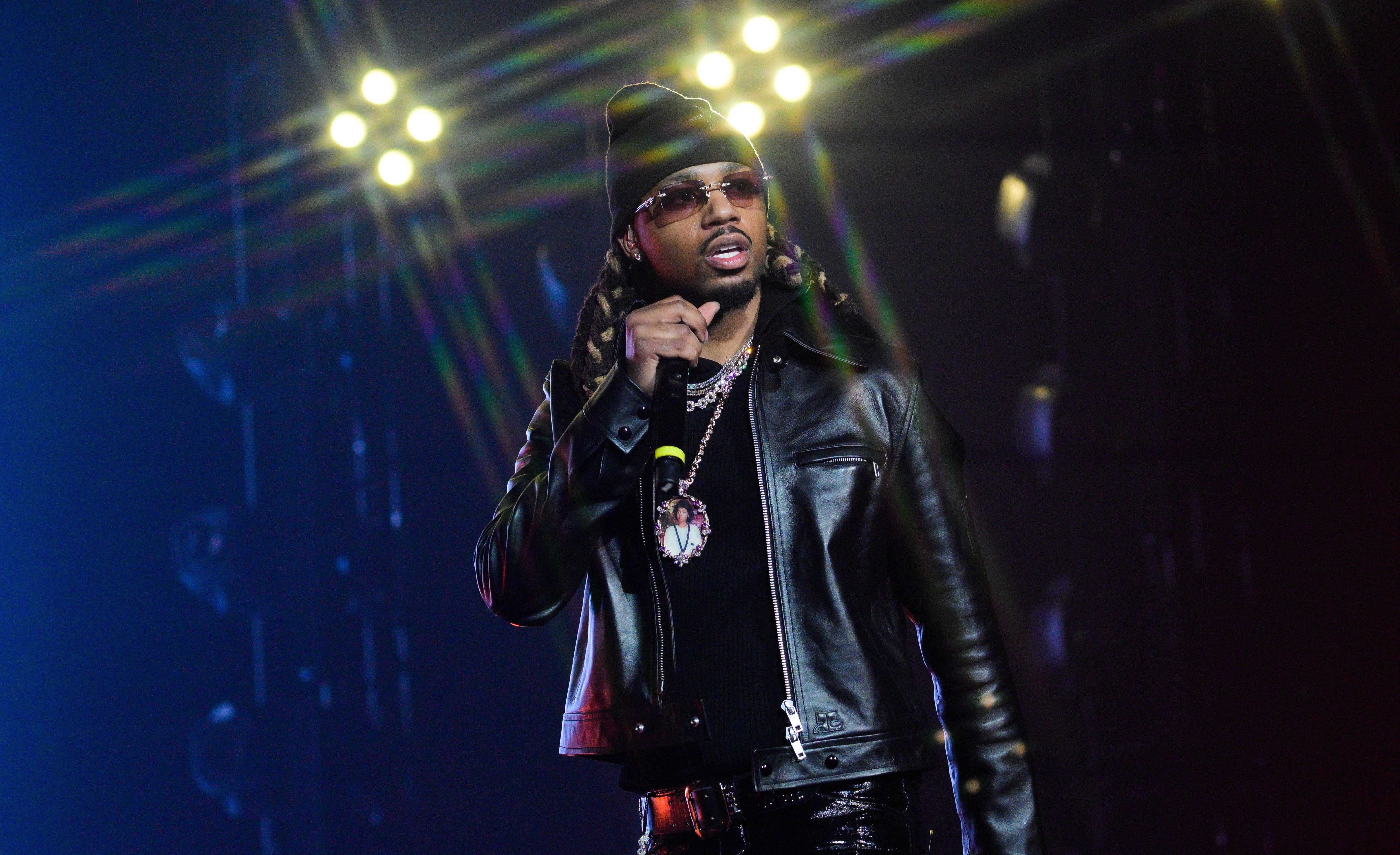
Photo: Prince Williams/Wireimage
list
Metro Boomin's Essential Songs: 10 Must-Know Tracks, From "Creepin" To "Like That"
The 2024 GRAMMY nominee for Producer Of The Year is one of hip-hop's most in-demand minds. Between his collab albums with Future and some highly debated beefs with rap's biggest stars, it's the perfect time to revisit the Metro-verse.
Metro Boomin has spent more than a decade redefining rap music. The gloomy, 808-induced trap beats that flood radio airwaves and blare from nightclub speakers are a symbol of his influence. But now, the Atlanta-based superproducer is on one of his biggest musical runs to date.
In April, Metro released the second of two joint albums with Future, hinted at a third release this year, sold out a concert at the Kundalini Grand Pyramids in Egypt, and clinched the No. 1 spot on Billboard’s Hot 100 with "Like That" featuring Kendrick Lamar. He also delivered a first-of-its-kind instrumental diss aimed at Drake called "BBL Drizzy," accusing the Toronto rapper of going under the knife.
The diss was in response to Drake’s "Push Ups" and subsequent disses toward Kendrick Lamar. "Metro shut your hoe ass up and make some drums" he rapped. The verbal blow inspired Metro to release the hilarious instrumental, which he encouraged fans to rap on for a chance to win a free beat.
Months before the feud, Metro celebrated two nominations for Best Rap Album and Producer of the Year, Non-Classical at the 66th GRAMMY Awards. While he didn’t take home a coveted golden gramophone, the momentum has elevated his career to new heights.
Before the St. Louis-bred producer kicks off the We Trust You tour with Future on July 30, revisit 10 of Metro Boomin's biggest releases.
"Karate Chop" (2013)
A 19-year-old Metro crafted his first charting single right before making a life-changing move to Atlanta. With piercing synths and bubbly arpeggios, the song was the lead single for Future’s highly anticipated sophomore album, Honest.
But Metro, a freshman at Morehouse College at the time, wasn’t sold on its success. "I never really like it," Metro told XXL. "Then every time people would come into the studio, he would always play the record and I was like, ‘Why are you so stuck on this s—? We have way harder records.’"
But after cranking out a new mix on the original track, "Karate Chop" went on to become his first placement on a major label album. The remix with Lil Wayne further elevated the record and, by virtue, Metro’s profile as a musical craftsman.
"Jumpman" (2015)
Metro mastered the late-summer anthem in 2015 with "Jumpman." The song was the most notable hit from Drake and Future’s collaborative mixtape, What a Time to Be Alive, and went on to shut down bustling nightclubs and obscure strip joints. And while the record didn’t perform as well as other songs on this list, it secured Future his first Top 20 hit.
The song — which features Metro’s signature bass and a screeching raven sound effect — also saw a streaming boost after an Apple Music commercial featuring Taylor Swift rapping to the song. According to Adweek, the campaign helped generate a 431 percent increase in global sales
What makes "Jumpman" even more special is that a collab between Future, Metro, and Drake may never happen again. Reportedly, the duo is at odds with Drake because the OVO artist decided to link with 21 Savage on Her Loss instead of doing a follow-up project with Future.
"Father Stretch My Hands Pt. 1" (2016)
"Father Stretch My Hands Pt. 1" is the song that set Kanye West’s album, Life of Pablo, ablaze. Opening with a clip of gospel musician and singer T.L. Barrett’s Father I Stretch My Hands,” Metro’s signature producer tag kicks the record into full gear. The pulsating synthesizers and bouncy percussion match West’s raunchy and sexually explicit lyrics.
Metro’s production received significant praise, with several publications pointing to his contributions on end-of-year listings. And in the eight years since its release, "Father Stretch My Hands Pt. 1" has been certified six times platinum by the Recording Industry Association of America, making it one of Ye’s most-sold records of all time.
"Congratulations" (2016)
After the success of "White Iverson," a young Post Malone was on the hunt for the hottest producers in the rap game. He managed to land Metro, who worked with fellow producers Frank Dukes and the prolific Louis Bell on the triumphant trap record "Congratulations."
On a 2022 episode of the podcast "Full Send," Metro revealed that the celebratory song was made after watching the world’s greatest athletes eclipse historic feats of their own. "I remember the Olympics was on TV, and just how the music was sounding, it sounded like some champion s—," he said.
"Congratulations" marked Post Malone’s second Top 20 hit following his debut, "White Iverson." The song was certified diamond after totaling more than 11 million combined sales. Today, it remains one of Metro’s biggest achievements.
"Bad and Boujee" (2017)
Fueled by virality and a shoutout from Donald Glover at the 2017 Golden Globes, the Migos and Lil Uzi Vert’s "Bad and Boujee" landed Metro Boomin his first No. 1 Billboard hit as a producer.
The song has every element Metro fans have grown to love: moody keys, hard-hitting bass, and plenty of room for the artists’ adlibs to pierce through the track.
Two months before its eventual ascension, the song had a steep hill to climb atop the Billboard charts. But Metro’s production and the chemistry between Quavo, Offset, and Uzi helped the record shoot up to its rightful place. It continues to garner praise In the years since its 2016 release, too. It was ranked No. 451 on Rolling Stone’s "500 Greatest Songs of All Time" list
"Mask Off" (2017)
When "Mask Off" dropped in 2017, it scorched the Billboard charts. Hip-hop was flirting with flutes (as heard on songs like Drake’s "Portland" and Kodak Black’s "Tunnel Vision" — another Metro-produced beat) — but "Mask Off" stands out as the biggest song of the short-lived era.
Metro infused jazz-like undertones to perfectly meld the flute lick into the dark and mystic beat. The record led to the remix with Kendrick Lamar, with his verse breathing new life into the already-seismic hit. It’s now certified nine times platinum.
Years after the song’s release, Future said "Mask Off" initially put radio programmers in disarray. In his East Atlanta rapper’s Apple Music documentary The WIZRD, he revealed that the song dropped before Carlton WIlliams’ "Prison Song" sample was officially cleared. "Out of all the songs, ‘Mask Off’ wasn’t even legit," he said. "The s— was on the radio, they’re thinking it’s not a sample, but it got so big they were like, ‘It’s a sample.’"
"Heartless" (2019)
The Weeknd's "Heartless" is a pop and electro-clash classic that fires on all cylinders. The visuals are atmospheric, the lyrics are ultra-stimulating, and the production — partly handled by Metro — makes for a lasting club banger.
The leading single for The Weeknd’s fourth studio album, After Hours, topped the Billboard charts. It marked the Toronto-born crooner’s fourth No. 1 hit and unveiled the depths of Metro’s musical arsenal.
Metro produced four tracks on After Hours: "Faith," "Escape from L.A.," "Until I Bleed Out" and "Heartless." On the latter and in his other collaborations with The Weeknd, James Blake, and Solange, Metro’s creative sorcery was tested. He proved, once again, that he could generate a hit outside the confines of trap music.
"Creepin’" (2022)
After a solid outing on his first album Not All Heroes Wear Capes, Metro returned with another series of hard-hitting records. His second solo venture, Heroes & Villains, featured John Legend, Don Tolliver, Travis Scott, and other premiere artists. But the biggest song to come out of the star-studded lineup was "Creepin’" featuring 21 Savage and The Weeknd.
The only single to Metro’s second solo album struck sonic gold. The Weeknd’s flowy vocals overlay the silky and harmonic record, which transitions to a more trap-induced beat once 21 Savage’s verse kicks in. The remake of Mario Winans’ "I Don’t Wanna Know" was a notable departure from Metro’s past singles, which heavily lean on his trap roots. But it still managed to connect with his audience – and even beyond it. "Creepin" peaked at No. 3 on Billboard, which was Metro’s highest-charting solo record up until that point.
Spider-Man: Across The Spider-Verse (2023)
Following the success of "Creepin’" and his other smash singles, Metro extended his creative powers to the film world. He was given the green light to executive produce the soundtrack for Sony’s Spider-Man: Across the Spider-Verse.
Metro Boomin told Indie Wire that he crafted songs from rough animations and selected scenes "just to get in the world and the story of Miles [Morales] and what he’s going through," He even exchanged phone calls and texts with the film’s composer Daniel Pemberton to ensure the soundtrack and score were on the same accord.
From the classical serenade "Am I Dreaming" to the Latin swing of "Silk & Cologne" and the Timbaland-stomping "Nas Morales," the result was an equally transformative musical experience. Each record ranged in musicality and tone while beautifully complementing the vibrant animated superhero flick.
"Like That" (2024)
"Like That" is easily one of the best beats in Metro’s catalog, and may end up being one of the most memorable. Samples from Rodney O & Joe Cooley’s "Everlasting Bass" and Eazy-E’s 1989 classic "Eazy-Duz-It" shaped the bouncy trap beat, sinister synths, and spine-chilling baseline. But Kendrick Lamar’s verse turned it into a heat-seeking missile.
With the song’s thunderous bass and rapid hi-hats in the background, Kendrick dissed J. Cole and Drake for their recent claims of rap supremacy, particularly on 2023’s "First Person Shooter." The lyrical nuke sparked the Civil War-style rap feud, which led to a seven-song exchange between Kendrick and Drake.
The initial musical blow made the genre stand still. It also led to the massive success of the record, which notched Future and Metro another No. 1 hit song. It also helped the pair’s album, We Don’t Trust You, claim the top spot on the Billboard 200 albums chart.
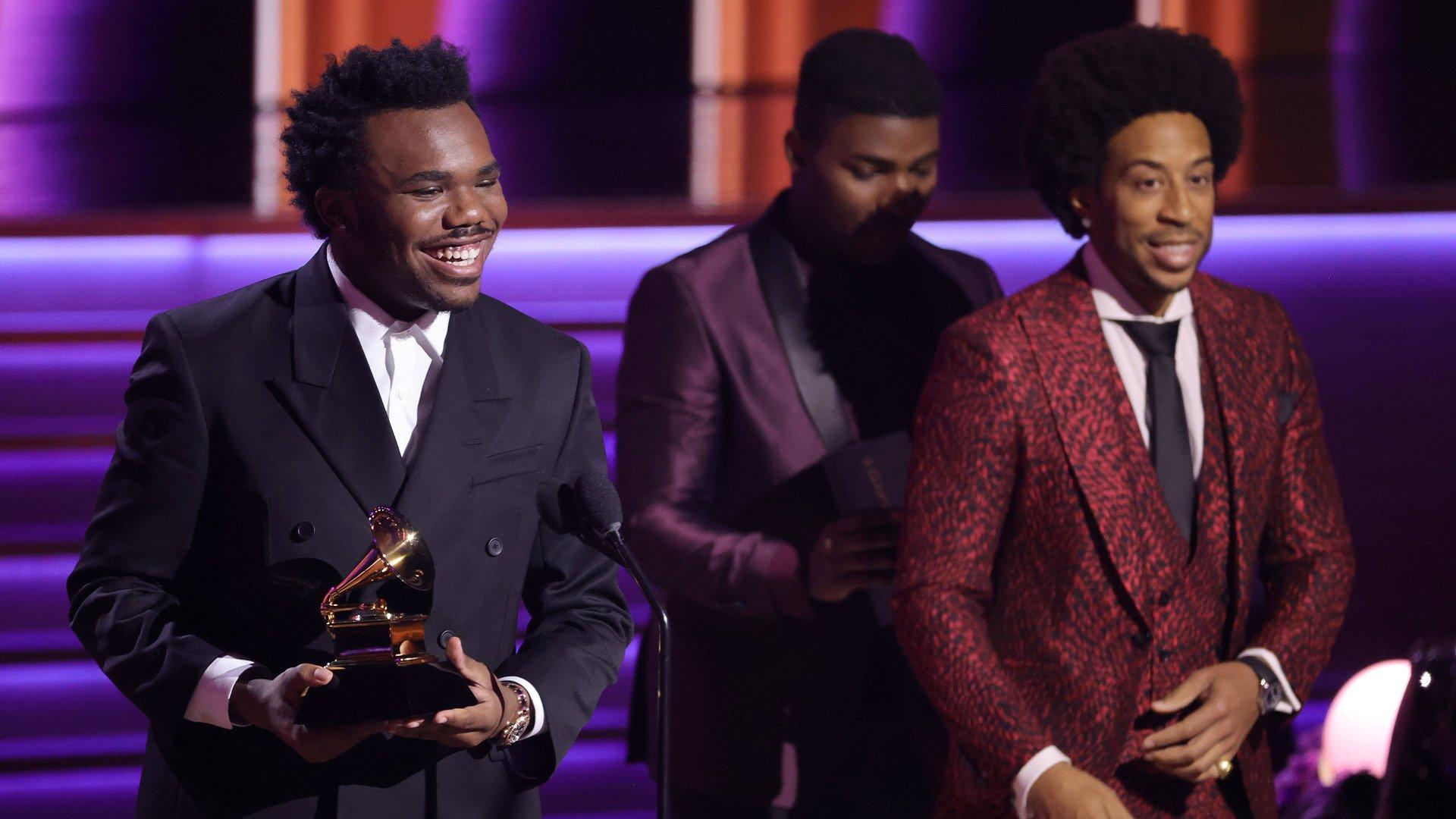
Photo: Matt Winkelmeyer/Getty Images
video
GRAMMY Rewind: Watch Baby Keem Celebrate "Family Ties" During Best Rap Performance Win In 2022
Revisit the moment budding rapper Baby Keem won his first-ever gramophone for Best Rap Performance at the 2022 GRAMMY Awards for his Kendrick Lamar collab "Family Ties."
For Baby Keem and Kendrick Lamar, The Melodic Blue was a family affair. The two cousins collaborated on three tracks from Keem's 2021 debut LP, "Range Brothers," "Vent," and "Family Ties." And in 2022, the latter helped the pair celebrate a GRAMMY victory.
In this episode of GRAMMY Rewind, turn the clock back to the night Baby Keem accepted Best Rap Performance for "Family Ties," marking the first GRAMMY win of his career.
"Wow, nothing could prepare me for this moment," Baby Keem said at the start of his speech.
He began listing praise for his "supporting system," including his family and "the women that raised me and shaped me to become the man I am."
Before heading off the stage, he acknowledged his team, who "helped shape everything we have going on behind the scenes," including Lamar. "Thank you everybody. This is a dream."
Baby Keem received four nominations in total at the 2022 GRAMMYs. He was also up for Best New Artist, Best Rap Song, and Album Of The Year as a featured artist on Kanye West's Donda.
Press play on the video above to watch Baby Keem's complete acceptance speech for Best Rap Performance at the 2022 GRAMMYs, and check back to GRAMMY.com for more new episodes of GRAMMY Rewind.
How The 2024 GRAMMYs Saw The Return Of Music Heroes & Birthed New Icons
